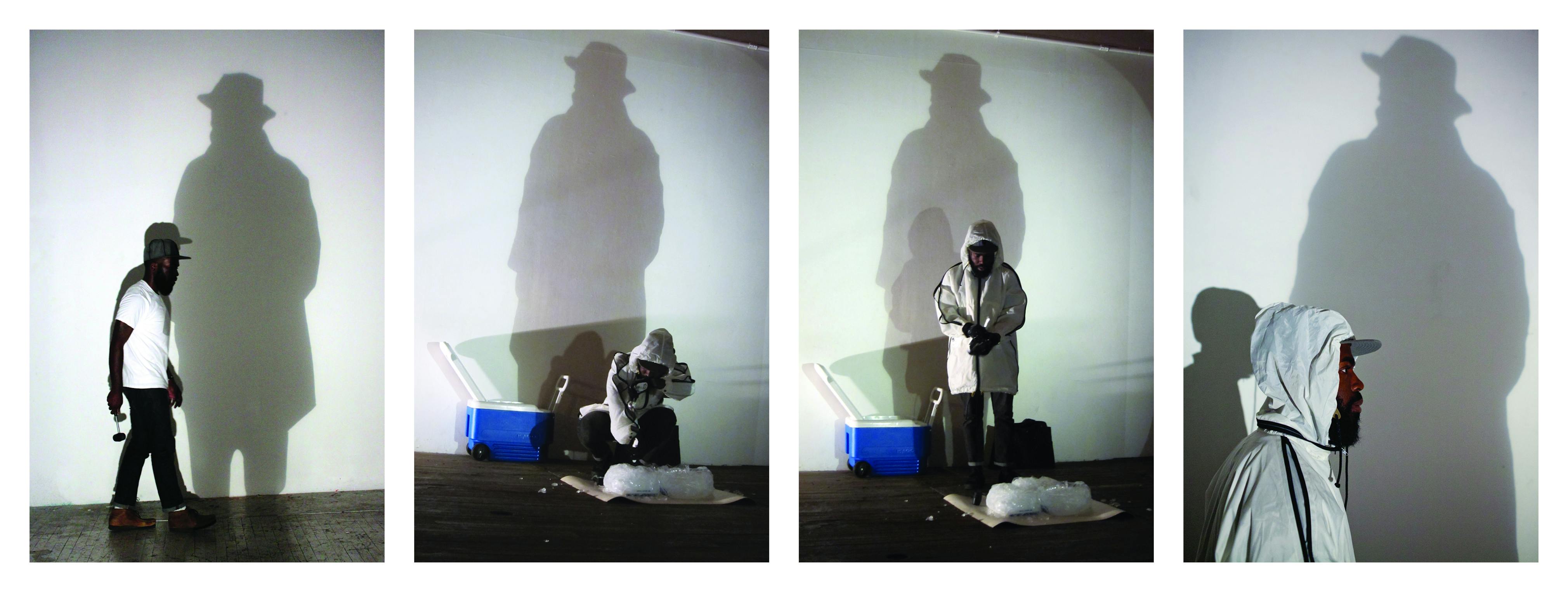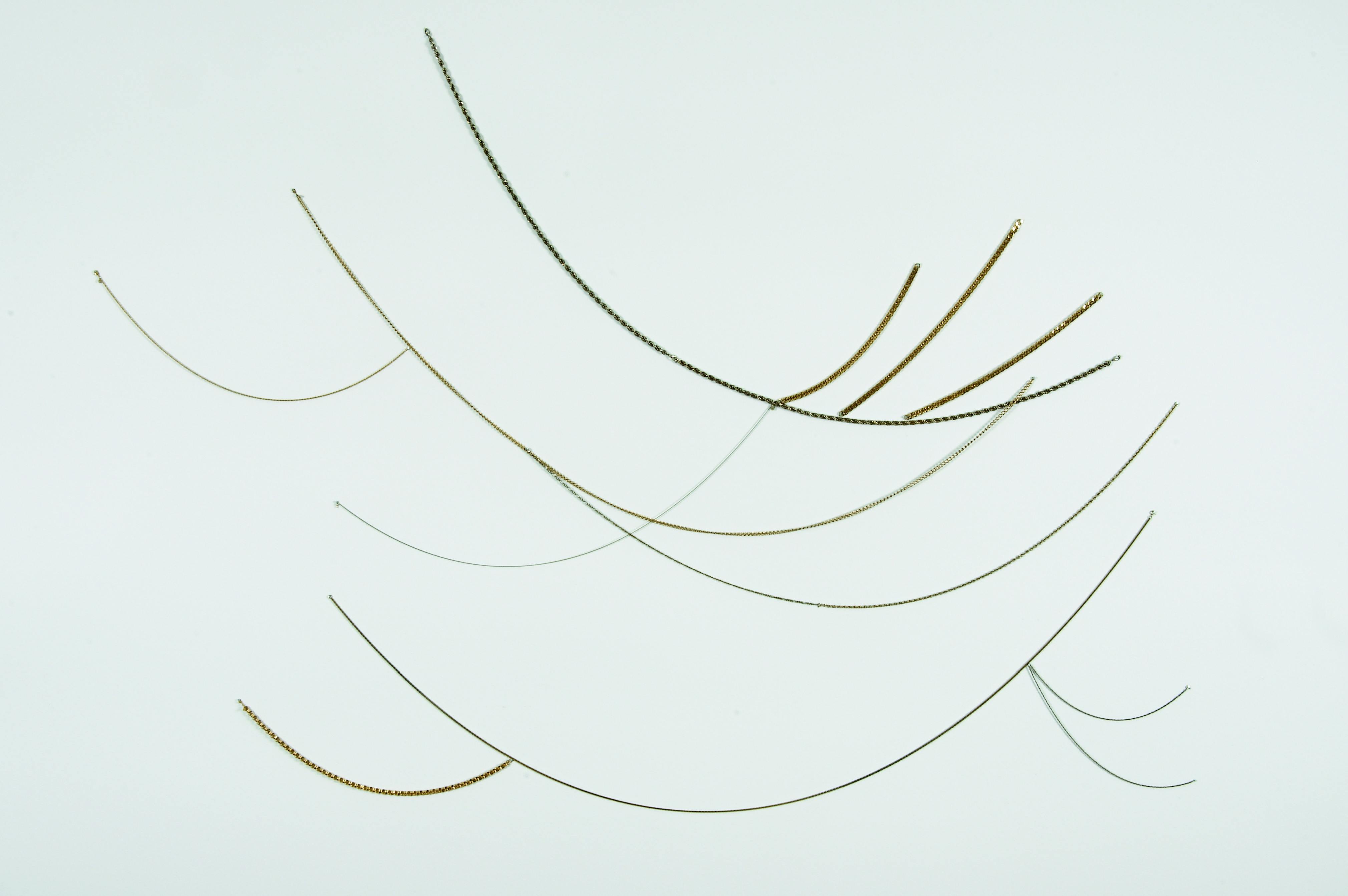If/Then: You Never Thought Hip Hop Would Take It This Far

Derrick Adams, I Just Crush a Lot, 2011–13.
Digital chromogenic prints.
Each: 36 × 24 in.
Studio Museum in Harlem; Museum purchase with funds provided by the Acquistion Committee 2014.4.1A-D

Derrick Adams, I Just Crush a Lot, 2011–13.
Digital chromogenic prints.
Each: 36 × 24 in.
Studio Museum in Harlem; Museum purchase with funds provided by the Acquistion Committee 2014.4.1A-D
Hip hop, arguably one of New York City’s greatest exports, turns fifty this year! An unstoppable global force, hip-hop culture has changed the way people across the world listen, speak, dance, dress, and imagine. Black visual artists have taken cues from—and been catalysts for—hip hop from the start. So, if you like the following six classics from the golden age of hip hop, then you will love their artwork pairing from our permanent collection.
IF YOU LIKE ...
The Fugees, "Nappy Heads"
THEN YOU'LL LIKE ...
Hank Willis Thomas,
Black Righteous Space, 2012


Hank Willis Thomas, Black Righteous Space, 2012. DVD (Playlist and video installation), microphone, and Mac Mini, Approx. 60 min in length. Studio Museum in Harlem; Museum purchase with funds provided by the Acquisition Committee 2015.7 © Hank Willis Thomas. Courtesy the artist and Jack Shainman Gallery, New York.
Black Refractions: Highlights from the Studio Museum in Harlem (Installation view) at the Utah Museum of Fine Arts, Salt Lake City, UT, January 23, 2021–April 10, 2021. Organized by The American Federation of Arts and Studio Museum in Harlem. Image courtesy of The Utah Museum of Fine Arts.
Lauryn Hill, one of the greatest and most unique hip-hop MCs, ends this song valiantly:
Now, speak of resistance, we’re nappy heads rhymes, kinks, braids, and dreads, the mother of creation, epitome of creativity, yeah and keep your heads nappy!
Taking up the title of Hank Willis Thomas’s interactive installation, imagine a Black righteous space of Black creativity, joy, resistance, and Black natural hair. Thomas’s installation features a mic in the middle of the projection where members of the public can speak of resistance. This effort to speak up unapologetically is foundational to not only hip hop, but the continued struggle for Black liberation. The song’s lyrics embody Black creative agency and resistance.
IF YOU LIKE ...
Big Pun ft. Joe, "Still Not a Player"
THEN YOU'LL LIKE ...
Derrick Adams, I Just Crush a Lot, 2011–13
In these photos, Adams recreates scenes from David Hammons’s Bliz-aard Ball Sale (1983), in which the artist peddled snowballs in New York City’s East Village. Imagine the subtle and savvy scam—selling snowballs in the winter? Don’t hate the player, hate the game. Who better makes us think of the hustle than the Bronx Boricua, Big Pun. Just as Adams responds to Hammons’s work, Big Pun’s inspiration for his 1998 song was a response and shoutout to the R&B singer Joe’s 1997 hit, “Don’t Wanna Be a Player.”
IF YOU LIKE ...
Public Enemy, "Can't Truss It"
THEN YOU'LL LIKE ...
Robert A. Pruitt, For Whom the Bell Curves, 2004


Robert Pruitt, For Whom the Bell Curves, 2004.
Studio Museum in Harlem; Museum purchase made possible by a gift from Rena Bransten, San Francisco, and a gift from Burt Aaron, New York 2006.14
The song “Can’t Truss It” starts off with the voice of Malcolm X reminding people of the history and tragedy of slavery. Public Enemy is the essence of political hip hop: a sub-genre focused on the sociocultural issues relevant to empowering and awakening the Black community. Robert Pruitt’s interests connect history, narrative, and imagination, making this more subtle abstracted reference to bondage and slavery ever more affecting and layered.
IF YOU LIKE ...
The Diplomats, "I'm Ready"
THEN YOU'LL LIKE ...
Sanford Biggers, Haute Mess, 2014


Sanford Biggers, Haute Mess, 2014.
Antique quilt fragment, assorted textiles, mixed media on archival paper, 39 1/2 x 37 in.
Studio Museum in Harlem; Bequest of Peggy Cooper Cafritz (1947–2018), Washington, D.C. Collector, Educator, and Activist 2018.40.35
You can’t talk about hip hop without bringing up Harlem’s very own Cam’ron and the Diplomats. As Cam’ron raps, “Jim Jones, c’est ce bon, Santana, magnifique,” we hear the layered sampling and drums, iconic to a Diplomats production, slicing through like the textiles, fabric, paint, and paper that come together in Sanford Biggers’s Haute Mess. Haute Mess is like an elegant bouquet of pink flowers in the shape of a big heart—love for your kith, love for your block, and love for the neighborhood that made you, Harlem.
IF YOU LIKE ...
Tupac Shhakur, "Changes"
OR
Queen Latifah "U.N.I.T.Y."
THEN YOU'LL LIKE ...
Jamel Shabazz, Remembering Tupac, Harlem NYC, 1998
Though he is most associated with the West Coast, Tupac Amaru Shakur was born in New York City. When looking at the Jamel Shabazz image of a Black man posing with two children, you can’t help but imagine hearing Tupac’s “Changes,” which challenges people to think deeply about the struggle for survival for Black people in the United States. The song is imbued with the presence of Afeni Shakur, his mother, and her political philosophies as a member of the Black Panther Party. The song’s spirit is about love, abolition, and belonging, even through counternarrative.
I got love for my brother, but we can never go nowhere Unless we share with each other We gotta start makin’ changes Learn to see me as a brother instead of two distant strangers


Jamel Shabazz, Remembering Tupac, Harlem NYC, 1998.
Gelatin silver print, 16 x 20 in.
Studio Museum in Harlem; Gift of the artist 2018.11.4